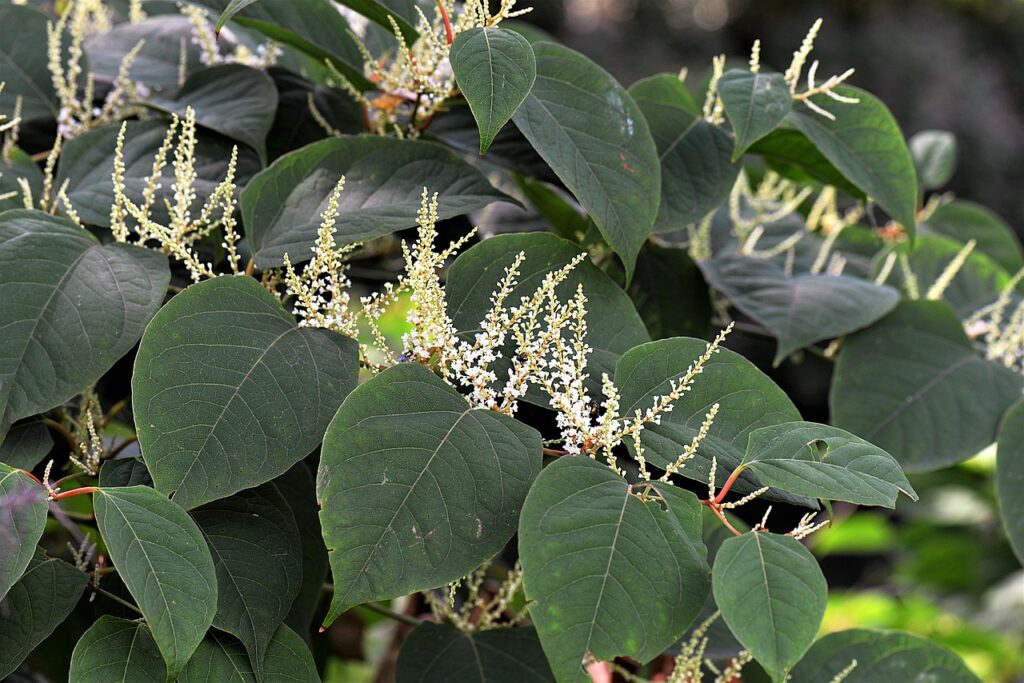Japanese Knotweed, scientifically known as Fallopia japonica, is a highly invasive plant species that has garnered significant attention in recent years due to its detrimental effects on the environment and property values. How did this troublesome plant find its way to different parts of the world? In this article, I will delve into the history and origin of Japanese Knotweed, exploring its journey from East Asia to the rest of the world and its impact on ecosystems.

A Plant of East Asian Origins
Japanese Knotweed is native to East Asia, specifically Japan, China, and Korea. Its scientific name, Fallopia japonica, reflects its Japanese origin. The plant’s first recorded introduction to Western countries dates back to the mid-19th century. European explorers and botanists were fascinated by the unique appearance of this perennial herbaceous plant and decided to introduce it to Europe and North America as an ornamental species.
Aesthetic Appeal Turned Invasive Nightmare
Japanese Knotweed’s initial introduction to the Western world was driven by its ornamental value. Its bamboo-like stems and attractive green leaves made it a popular choice in gardens and landscapes.
However, it wasn’t long before its invasive nature became apparent. The plant’s aggressive growth habit and strong root system allowed it to quickly spread and outcompete native vegetation, creating problems for the ecosystems it invaded and buildings and construction nearby.
The Spread Across Continents
The first recorded introduction of Japanese Knotweed to Europe occurred in the 1820s when Dutch botanist Philipp Franz von Siebold brought it to the Netherlands. Soon after, it was introduced to the United Kingdom and other parts of Europe. In North America, it was introduced in the late 1800s, primarily as an ornamental plant in gardens and for erosion control along riverbanks.
Over the years, Japanese Knotweed gradually spread throughout these regions, adapting to various climates and soil conditions. Its ability to reproduce through rhizomes, fragments, and seeds made it a formidable invader. By the mid-20th century, it had firmly established itself in many countries, posing significant challenges to ecosystems and property owners.
Environmental Impact
Japanese Knotweed’s aggressive growth has had detrimental effects on the environment. It competes with native plants for resources, often outcompeting them and reducing biodiversity in affected areas. The dense thickets it forms can alter natural habitats and disrupt ecosystems.
Control and Management
Managing Japanese Knotweed has proven to be a challenging task. Eradicating it completely is difficult, and control efforts typically involve a combination of herbicides, cutting, and excavation. Biological control methods using insects that feed on the plant are being explored but have had limited success so far. Property owners facing Japanese Knotweed infestations often seek professional assistance to address the issue effectively. Now you can hire someone to remove knotweed easily.
Conclusion
The history and origin of Japanese Knotweed trace back to its native East Asian regions, where it was initially prized for its ornamental qualities. However, its invasive nature soon became evident as it spread across Europe and North America, disrupting ecosystems and causing property damage.
Today, Japanese Knotweed remains a significant environmental concern, and its control and management require expert assistance. While its introduction to Western countries was driven by aesthetic appeal, the consequences of its invasion have highlighted the importance of responsible plant introductions and the need for effective management strategies to combat invasive species like Japanese Knotweed.



4 comments